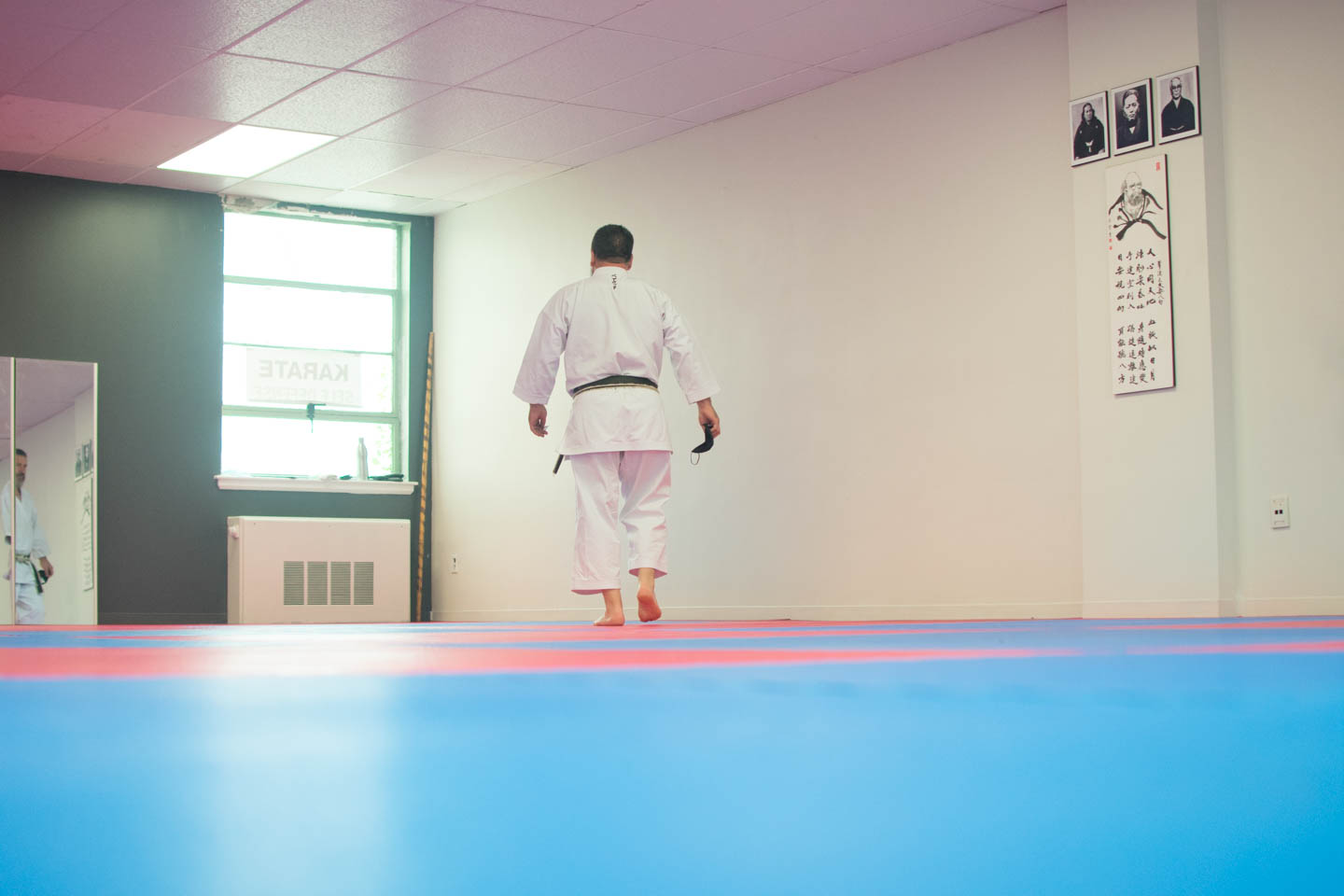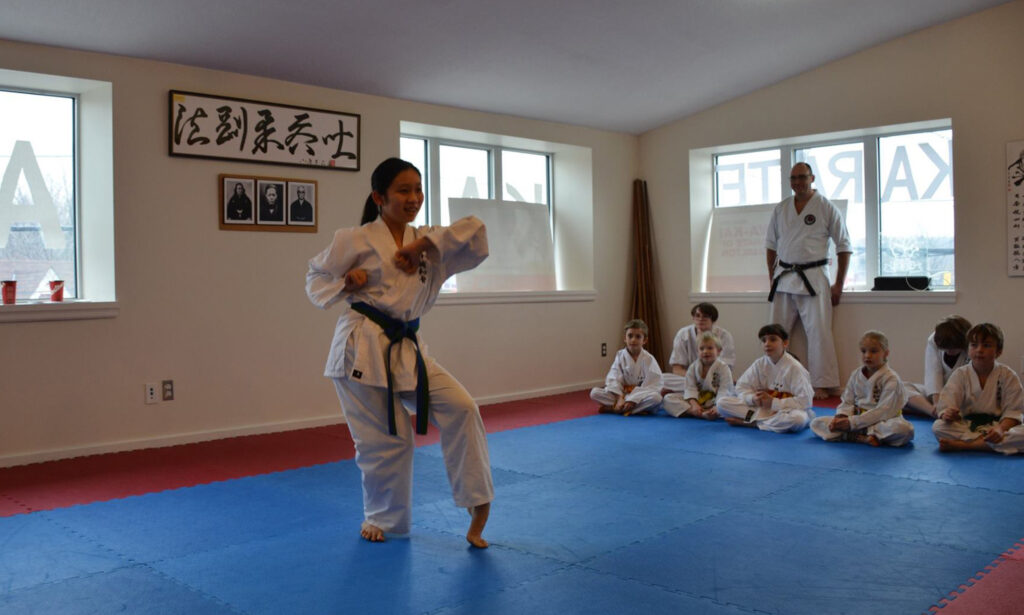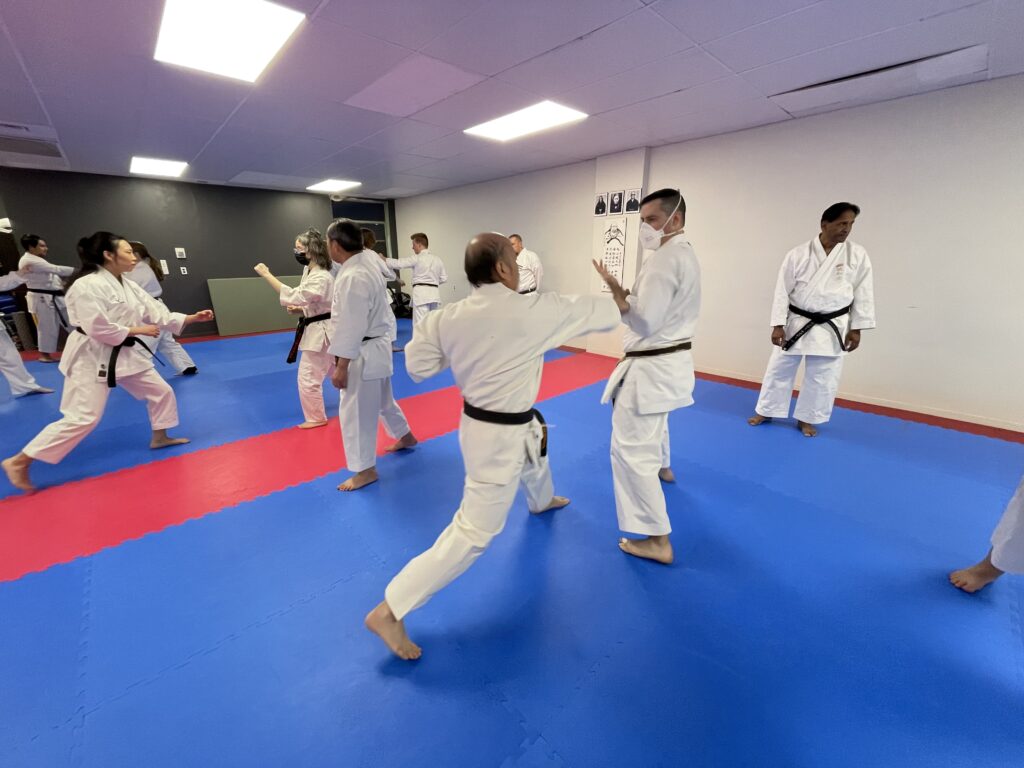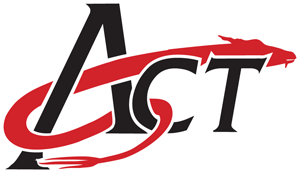
Dojo
Our goal is to empower students through the study of Goju Ryu Karate and complementary martial arts training. We believe that with hard work, anything is possible; with determination, progress is inevitable; and with courage, fears can be overcome. Through their training, students grow not only in physical strength and skill but also in mental focus and emotional resilience. At ACT, students and instructors walk this path together, supporting one another in the pursuit of continuous improvement and personal growth.
Dojo Guidelines
To maintain a respectful and focused training environment, all students are expected to observe the following guidelines:
- Footwear
- Remove shoes before entering the training area and place them on the shelves provided. Shoes are not permitted on the mats. When leaving the training area (e.g., to use the washroom), please wear your shoes or a pair of zori (flip-flops) available on the shelf. Students may also bring their own or purchase a pair through the Dojo.
- Remove shoes before entering the training area and place them on the shelves provided. Shoes are not permitted on the mats. When leaving the training area (e.g., to use the washroom), please wear your shoes or a pair of zori (flip-flops) available on the shelf. Students may also bring their own or purchase a pair through the Dojo.
- Respectful Entry
- Students should be properly dressed and bow upon entering and leaving the Dojo.
- Students should be properly dressed and bow upon entering and leaving the Dojo.
- Respect for Instructors and Seniors
- Always show respect to instructors and senior students. Instructors should be addressed as Sensei or Shihan, depending on their rank. When the head instructor enters the dojo, it is customary for the senior student to call the class to attention and lead a bow.
- Always show respect to instructors and senior students. Instructors should be addressed as Sensei or Shihan, depending on their rank. When the head instructor enters the dojo, it is customary for the senior student to call the class to attention and lead a bow.
- Instruction
- Only authorized members may offer instruction or clarification on what has been taught by Shihan Beardwood or Sensei Lucy.
- Only authorized members may offer instruction or clarification on what has been taught by Shihan Beardwood or Sensei Lucy.
- Punctuality
- Arrive on time so class is not interrupted. If late, warm up quietly in the Umetsu Room or off to the side after bowing at the doorway. When ready to join, signal respectfully by saying Onegai shimasu (“please allow me to join”).
- Arrive on time so class is not interrupted. If late, warm up quietly in the Umetsu Room or off to the side after bowing at the doorway. When ready to join, signal respectfully by saying Onegai shimasu (“please allow me to join”).
- Awareness
- Always be mindful of your surroundings during training to ensure safety for yourself and others.
- Always be mindful of your surroundings during training to ensure safety for yourself and others.
- Harmony
- Strive to maintain harmony with fellow students and contribute to a positive training atmosphere.
- Strive to maintain harmony with fellow students and contribute to a positive training atmosphere.
- Courtesy
- Senior students are expected to treat junior members with kindness and respect.
- Senior students are expected to treat junior members with kindness and respect.
Dojo Etiquette
The word Dojo translates to “Meditation Hall.” It is a place for focused physical and mental training, guided by respect and discipline. To maintain this atmosphere, we observe certain traditions that honour those who came before us.
At the front of the dojo, you will find photographs of our lineage of instructors—Gogen Yamaguchi, Chojun Miyagi, and Shuji Tasaki. This area is called the Joseiki. At the beginning of class, when bowing toward the front, we say Shinzen ni, which is a call to face this area; the term Shomen may also be used.
Cleanliness and care for the training space are also part of dojo etiquette. Students are encouraged to arrive a few minutes early to sweep the floor before class. This practice stems from the concept of Giri—a sense of obligation and responsibility toward others. Each week, the dojo is also vacuumed and disinfected by Shihan and Sensei Beardwood to ensure a clean and respectful environment for all.

Methods of Training and Equipment
There are three principal ways in which we learn and practice karate:
- Kihon – Derived from ki (spirit) and hon (origin), Kihon is often translated as “basics,” though it more accurately means “from the source” or “fundamentals.” It encompasses the foundational techniques and principles required to perform movements effectively and with precision.
- Kata – Meaning “form,” Kata consists of prearranged sequences of movements that teach proper technique, timing, and coordination. Through Kata, students learn to apply techniques fluidly and with purpose.
- Kumite – Translated as “sparring,” Kumite is the application of principles learned in Kihon and Kata within a controlled and dynamic setting. It develops timing, distance, and adaptability against a non-cooperative partner. By the orange belt level, all students are expected to have their own protective equipment. Please speak with Shihan or Sensei Beardwood for assistance with ordering.


